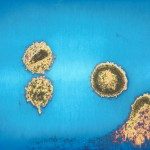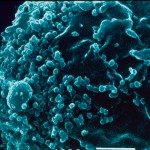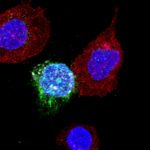Lien vers Pubmed [PMID] – 21642597
Blood 2011 Jul;118(4):955-64
How HIV controllers (HICs) maintain undetectable viremia without therapy is unknown. The strong CD8(+) T-cell HIV suppressive capacity found in many, but not all, HICs may contribute to long-lasting viral control. However, other earlier defense mechanisms may be involved. Here, we examined intrinsic HIC cell resistance to HIV-1 infection. After in vitro challenge, monocyte-derived macrophages and anti-CD3-activated CD4(+) T cells from HICs showed low HIV-1 susceptibility. CD4 T-cell resistance was independent of HIV-1 coreceptors and affected also SIVmac infection. CD4(+) T cells from HICs expressed ex vivo higher levels of p21(Waf1/Cip1), which has been involved in the control of HIV-1 replication, than cells from control subjects. However, HIV restriction in anti-CD3-activated CD4(+) T cells and macrophages was not associated with p21 expression. Restriction inhibited accumulation of reverse transcripts, leading to reduction of HIV-1 integrated proviruses. The block could be overcome by high viral inocula, suggesting the action of a saturable mechanism. Importantly, cell-associated HIV-1 DNA load was extremely low in HICs and correlated with CD4(+) T-cell permissiveness to infection. These results point to a contribution of intrinsic cell resistance to the control of infection and the containment of viral reservoir in HICs.






